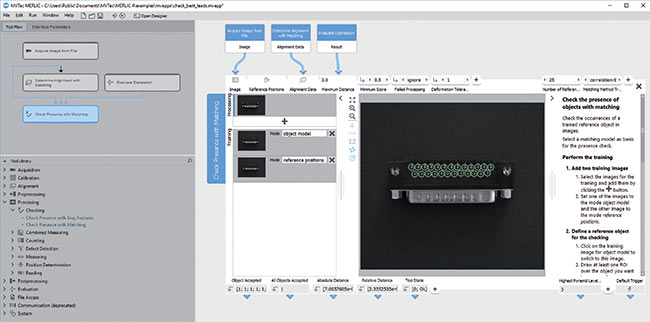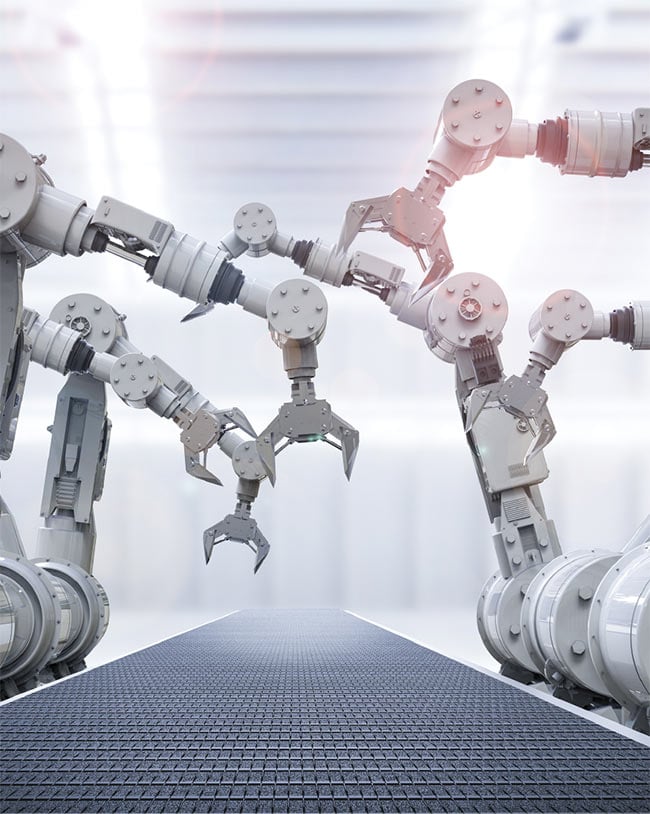The emergence of the smart factory and Industry 4.0 has prompted the integration of automation and machine vision.
Christoph Zierl, MVTec Software GmbH
New production trends such as IIoT (Industrial Internet of Things) and the smart factory are changing value chains, increasing efficiency with a greater number of interconnections and enhanced standardization. Accompanying technologies — notably machine vision — are becoming increasingly important in this context. Machine vision plays a key role in the consistent automation of testing, measurement, and production processes. So far, however, the technology has had only a limited ability to interact with the classic automation environment because customer applications often treat the machine vision task independently from process control communications. This situation is changing, thanks to the creation of new common standards such as the Open Platform Communications Unified Architecture (OPC UA).

Previously, the “worlds” of automation and machine vision operated largely independently. The development histories of these two areas of technology followed different timelines. While process automation substantially influenced industrial production as early as the 1960s, machine vision evolved in the 1980s with the increase in CPU processing. Nevertheless, spurred by recent developments in artificial intelligence (AI) and embedded vision, it is undergoing rapid and highly dynamic development.
The unique benefits and potential of machine vision — image analysis, object identification, measurement, and code reading — are particularly evident in the contexts of Industry 4.0 and the smart factory. Here, extremely robust recognition rates can be achieved through optical, image-based processes. As a result, the technology is suited for demanding identification, inspection, and measurement tasks in highly automated and consistently networked industrial value chains. Case in point: Machine vision optimizes a wide range of automation scenarios in robotics. Handling and bin-picking methods, as well as interactions between robots, can be made more precise and efficient. Monitoring supported by machine vision allows humans and collaborative robots (cobots) to work together much more safely. Workpieces can be accurately positioned and precisely located in 3D space. Finally, machine vision algorithms are used in quality assurance to monitor defects.
New functions and technologies are continuously incorporated into machine vision as part of its further development. They include methods based on AI such as deep learning, machine learning, and convolutional neural networks (CNNs). These and other new features help to achieve results that are even more valid, and to simplify machine vision processes.
Lack of interfaces
To consistently interconnect digital production processes, machine vision and classic automation technologies must interact efficiently. This requires common standards. However, the two technological fields have been subject to very little common standardization and integration in the past, due to the fact that the two markets involved different manufacturers. And systems integrators built in image acquisition independently of process communication. Now, with Industry 4.0, the growing interconnection requires the standardized interoperability of all technologies.

MVTec’s MERLIC software simplifies the creation of machine vision applications. Courtesy of MVTec Software GmbH.
Proprietary control and sensor systems that cannot be easily integrated into other applications are typically used in the automation environment. Depending on the field of use, the automation applications must be reprogrammed, and corresponding interfaces have to be developed. This is especially true of programmable logic controllers (PLCs), for which proprietary protocols such as EtherCAT, PROFINET/PROFIBUS, and Ethernet/IP have been authoritative for many years. The resulting lack of standards has meant that individual components of the process chain could barely communicate with each other and has also made it difficult to implement interoperability between machine vision and the PLC.

OPC UA promotes the merging of the machine vision and automation worlds.
In and of itself, however, machine vision can be seen as a trailblazer when it comes to standardization. In 2006, GenICam (Generic Interface for Cameras) became an important early standard, developed to regulate uniform, software-based access to a wide range of camera features used in machine vision. All commonly used camera standards — including GigE Vision and USB3 Vision, as well as high-speed standards such as Camera Link HS and CoaXPress — are based on GenICam.

Fully automated production processes are typical of Industry 4.0, aka the Industrial Internet of Things.
Other standards are also needed to successfully integrate machine vision into process automation. OPC UA plays a key role here. It was developed by the OPC Foundation, an international association of leading software and controller suppliers, with the aim of permitting data to be exchanged consistently between many different components — across manufacturers and compatible with all platforms and operating systems.
Common language
The OPC UA protocol is extremely important for standardization because it constitutes an overarching framework that defines a common language for data communications between various system environments. In this way, a wide range of applications can be seamlessly integrated into the automation environment — for example, in robotics. The core feature of OPC UA is a basic interdisciplinary specification that defines the general guidelines for exchanging data between the systems. In addition, it includes companion specifications that cover the special conditions of the individual industries. A specification also exists for machine vision, called the OPC UA Companion Specification for Machine Vision (OPC Vision). This specification was initiated and is being further developed by the OPC Vision Initiative of the VDMA (the Mechanical Engineering Industry Association of Germany).
OPC UA is a machine-to-machine (M2M) communications protocol that can not only transport information but also semantically describe machine data such as control variables, measured values, and parameters. It enables machines and robots to read the transmitted data and understand its context independently. Thanks to this semantic interoperability, machine vision can now seamlessly interact with PLCs for the first time. As a result, PLC functions can easily be used in combination with machine vision solutions and can simultaneously control various image acquisition devices as well as the PLC via the common standard, thereby enabling uniform semantics across all physical layers and fieldbuses.
Compatibility with MIPI standard
The complete compatibility of machine vision software with camera modules developed specifically for the embedded market has been proved in a number of tests. What makes these modules special is that they meet high industrial standards and are focused on high-volume applications. Many types of image sensors can be seamlessly integrated using the MIPI (Mobile Industry Processor Interface) transmission standard, which originated from the mobile phone market and has been adapted for industrial needs. The digital image information may be partially captured by any embedded device without additional load on the CPU. This means the entire processor capacity is available for embedded vision applications.
Once the full integration of process
automation and machine vision has been successfully implemented, handling of professional machine vision applications must be possible for a larger user group. To make it so, it is important to simplify the creation process significantly. The entire process can be designed quickly and easily with intuitive, user-friendly tools. As a result, even automation experts without any in-depth programming or machine
vision knowledge can create a variety of machine vision applications.
New production trends such as Industry 4.0 and the smart factory require consistent and perfectly integrated value creation processes. To accomplish this, the worlds of automation and machine vision must interact with each other seamlessly and compatibly. Such interaction is only made possible through common standards such as OPC UA. As a result, nothing will prevent the merging of the two technological fields anymore.
Meet the author
Christoph Zierl is technical director at MVTec Software GmbH, where he is responsible for the integration of machine vision software products through interfaces with industrial cameras and other hardware components. He has been a member of the GenICam Standard Group since its beginning and its vice chair since 2010.
OPC UA
The Open Platform Communications Unified Architecture (OPC UA) is a platform-independent service-oriented architecture that integrates all the functionality of the individual OPC Classic specifications into one extensible framework. Established in 2008, it ensures consistent
data exchange between various industrial components — independently of manufacturer, platform, and operating system. The OPC Foundation, an international body made up of
leading software suppliers and controller manufacturers, is at the forefront of this development. VDMA Machine Vision Group and the OPC Foundation released OPC UA Vision in 2019.
The work was carried out in a joint working group that included 17 experts from leading
European machine vision companies.
MIPI
Mobile Industry Processor Interface Camera Serial Interface 2 (MIPI CSI-2) is a standardized hardware interface for embedded systems and has a transport, application, and bit
transmission layer. It originated in the mobile and tablet market, and is increasingly used
in other markets as well. It has achieved widespread adoption for its ease of use and ability
to support a broad range of high-performance applications. Current embedded boards have
a MIPI interface by default and it is a critical component in today’s smartphones. MIPI is likely to play a similar role in machine vision in the future. One indicator would be the standardization launched by EMVA with its Embedded Vision Interface Standard (emVISION).
|